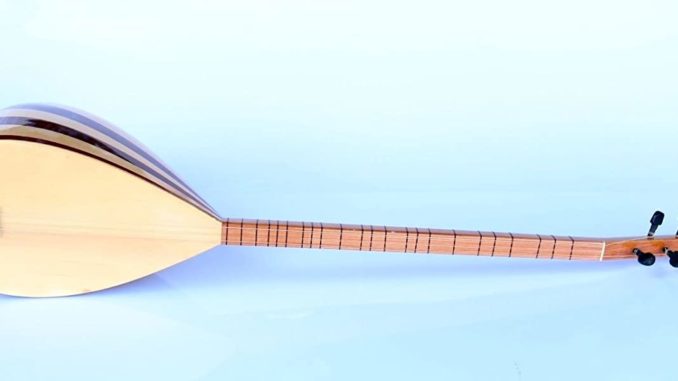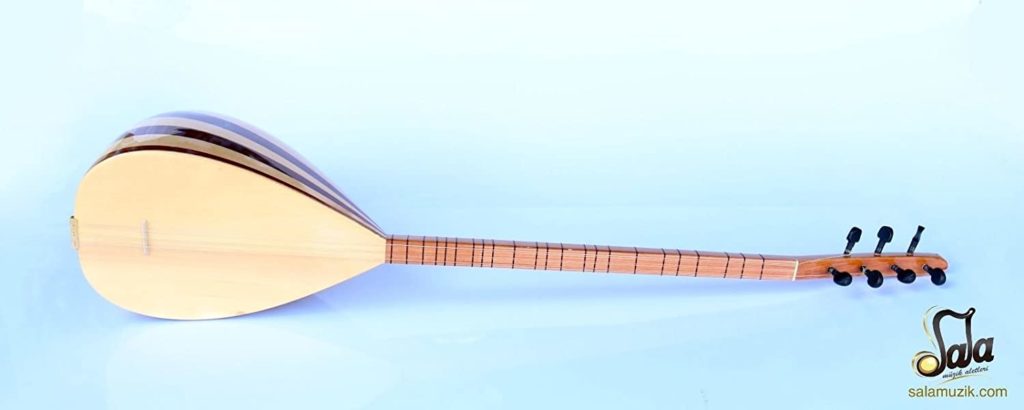
Baglama, also known as saz, is a traditional Turkish stringed instrument that has gained popularity all over the world. Its unique sound and design have attracted musicians and music enthusiasts alike. But what exactly is a baglama, and what makes it so special?

What is a Baglama?
A baglama is a long-necked, fretted stringed instrument that is played using a plectrum. It is a member of the lute family and has been around for hundreds of years. The instrument has a rounded body that is usually made of wood, and a long neck that is fretted with movable frets made of nylon or gut. The baglama has three strings, but some variations have up to seven strings.
The baglama is an integral part of Turkish folk music and has been used in various musical genres, including classical Ottoman music and contemporary Turkish pop music. The instrument is also used in various countries across the Balkans, the Middle East, and Central Asia.
Playing the baglama requires skill and technique. The musician holds the instrument upright and plucks the strings with a plectrum. The frets on the neck determine the pitch of the notes produced. The baglama is also played using various techniques, including hammer-ons, pull-offs, and slides. These techniques produce a unique sound that is distinct from other stringed instruments.
The baglama has undergone several transformations over the years. Traditional baglamas were usually made from mulberry wood, and the strings were made from animal gut. However, modern baglamas are made from a variety of materials, including spruce, mahogany, and rosewood. The strings are also made from different materials, such as nylon and steel. The shape and design of the instrument have also changed, with some variations featuring cutaways, soundholes, and pickups for amplification.
Despite its popularity, the baglama has faced several challenges over the years. One of the biggest challenges is the lack of standardization in its design and tuning. There are several variations of the baglama, and each variation has its own unique tuning. This has made it difficult for musicians to play together and has hindered the instrument’s popularity outside of its native regions.
To address this issue, efforts have been made to standardize the tuning of the baglama. In 2013, a group of Turkish musicians and musicologists came together to develop a standardized tuning system for the baglama. The system, known as the “New Baglama Tuning,” has gained widespread acceptance and has made it easier for musicians to play together.
Baglama Makers and Manufacturers
The history of baglama making dates back hundreds of years, with traditional craftsmen passing down their skills and techniques from one generation to the next. Today, baglama makers and manufacturers continue this tradition, using their expertise to create instruments that are both beautiful and functional.
One of the key factors that sets baglama makers and manufacturers apart is their commitment to quality. These craftsmen take great care in selecting the finest materials, such as high-quality woods and premium strings, to ensure that each instrument meets the highest standards of excellence.
In addition to their attention to detail, baglama makers and manufacturers also bring a wealth of knowledge and experience to their craft. They understand the nuances of different types of wood, the intricacies of string tension and tuning, and the various techniques used to create the distinct sound of the baglama. This expertise allows them to create instruments that not only look beautiful but also sound incredible.
When selecting a baglama maker or manufacturer, it’s essential to choose someone who has a reputation for excellence. This can be achieved by reading reviews and testimonials from other musicians who have purchased instruments from the maker or manufacturer in question. It’s also a good idea to look for makers and manufacturers who are willing to provide you with information about their materials and techniques, so you can make an informed decision about the instrument you are purchasing.
In addition to their commitment to quality and expertise, baglama makers and manufacturers also offer a wide range of customization options. This allows musicians to create an instrument that is uniquely suited to their playing style and preferences. Some common customization options include the type of wood used, the number of strings, the size and shape of the body, and the type of strings used.
In conclusion, the baglama is a unique and versatile stringed instrument that has a rich history and cultural significance. Its popularity has spread far beyond its native Turkey, and it continues to be a popular choice among musicians worldwide. Despite its challenges, efforts are being made to standardize its design and tuning, ensuring that it remains a relevant and important instrument in the world of music.
Is Bağlama hard to learn?
Learning the bağlama, a Turkish stringed instrument, can be both rewarding and challenging. While it shares similarities with other stringed instruments like the guitar, its unique tuning and playing techniques require dedication.
Key factors affecting learning curve:
- Prior musical experience: If you’ve played a guitar or other stringed instrument, you might find the transition easier, as some techniques and chord shapes are similar.
- Hand strength and dexterity: Building finger strength and developing the correct hand position is essential for playing the bağlama effectively.
- Understanding Turkish music theory: While not strictly necessary, knowledge of Turkish music theory can enhance your playing and understanding of traditional pieces.
Like any instrument, consistent practice is key to mastering the bağlama. With patience and dedication, you can enjoy the rich musical possibilities this instrument offers.
More Free Tabs
Seven String Guitar Tabs
Bass Tabs
Free Stylophone Tabs
Kalimba Tabs
Banjo Tabs
Lute Tabs
Dobro Tabs
Mandolin Tabs
Ukulele Tabs
